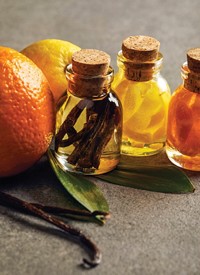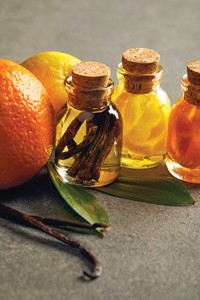Advertisement
Grab your lab coat. Let's get started
Welcome!
Welcome!
Create an account below to get 6 C&EN articles per month, receive newsletters and more - all free.
It seems this is your first time logging in online. Please enter the following information to continue.
As an ACS member you automatically get access to this site. All we need is few more details to create your reading experience.
Not you? Sign in with a different account.
Not you? Sign in with a different account.
ERROR 1
ERROR 1
ERROR 2
ERROR 2
ERROR 2
ERROR 2
ERROR 2
Password and Confirm password must match.
If you have an ACS member number, please enter it here so we can link this account to your membership. (optional)
ERROR 2
ACS values your privacy. By submitting your information, you are gaining access to C&EN and subscribing to our weekly newsletter. We use the information you provide to make your reading experience better, and we will never sell your data to third party members.
Consumer Products
Givaudan acquires natural-color maker DDW
Consumer demand for natural ingredients is also spurring deals for other firms
by Matt Blois
October 14, 2021
| A version of this story appeared in
Volume 99, Issue 38

Seeking to capitalize on growing demand for natural ingredients, the Swiss flavor and fragrance maker Givaudan will acquire DDW, a Kentucky firm that produces natural food coloring.
Louie D’Amico, president of Givaudan’s taste and well-being business, says the acquisition will make Givaudan the world’s second-largest provider of natural colors.
“With health and wellness top of mind for consumers over the last 18 months, interest in natural food formulation and recognizable, clean-label ingredients has continued to rise,” D’Amico says in an email. “This long-term trend is driving increased demand for natural colors.”
Oterra, which claims to be the largest natural-color firm, is also growing through acquisition. The company, previously known as Chr. Hansen Natural Colors, acquired Secna Natural Ingredients in June and Diana Food’s natural-color business in September.
This year’s activity follows a burst of enthusiasm from major food companies a few years ago. In 2015 and 2016, Kellogg, General Mills, and Mars pledged to substantially reduce their use of artificial colors. Since then, General Mills and Mars have backtracked, in part because consumer demand wasn’t as high as expected.
Brock Siegel, CEO of the food-coloring start-up Peak B, says that though some consumers have been pushing for natural colors for decades, demand isn’t universal. He notes that artificial colors are typically more vibrant, which can make them more appealing.
“There is one part of the market that will only go for natural. Another part prefers it,” he says. “You’ve got to sort out what people’s motivations are. . . . It’s not, put in natural and it will fly off the shelf.”
Siegel cofounded Peak B earlier this year to capitalize on a technique to extract blue pigment from red cabbage developed by his son’s food science lab at the University of California, Davis.
Jessica Cristadoro, co-owner of Food Business Consulting, says that consumer desire for simpler ingredients is driving demand for natural colors but that they’re more expensive and more difficult to use in recipes. She expects food companies to be more eager to use them as technology improves and prices drop. “It’s here to stay,” she says. “The reds and the yellows and purples have gotten so much better over the last few years.”




Join the conversation
Contact the reporter
Submit a Letter to the Editor for publication
Engage with us on Twitter